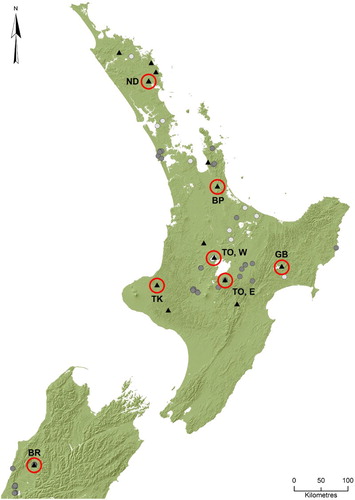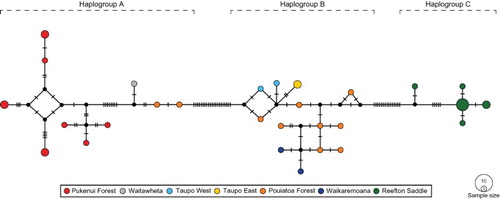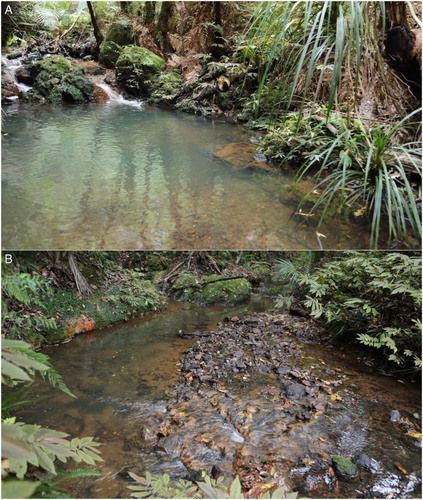Figures & data
Figure 1. Distribution records for Siphlaenigma janae. Dark-grey points indicate locations of specimens held in national collections (1960–2003), light-grey points indicate locations of specimens recorded by State of Environment monitoring (2005–2010) and black triangles indicate locations of specimens collected by the authors (2011–2017). Red circles with corresponding codes indicate locations for which DNA analysis was undertaken in this study.

Table 1. Body lengths of final instar nymphs of Siphlaenigma janae collected in three geographical areas of New Zealand.
Figure 2. Median-Joining network for Siphlaenigma janae based on the barcoding fragment of the COI gene. Coloured points represent different sampling locations and the size of the points is relative to the frequency of the haplotypes. Black points indicate hypothetical haplotypes and hatch marks on the branches indicate the number of mutational steps.

Table 2. Estimated evolutionary divergence of Siphlaenigma janae, based on a 658-bp fragment of the COI barcoding gene, presented as uncorrected p-distance (%). Between-group mean and maximum distances are presented above (grey shade text) and below the diagonal, respectively. Within-group mean distances are presented on the diagonal (bold values). See Supplementary Table S1 for individual haplotype p-distances and standard error estimates. n = number of individuals, Hap = number of haplotypes. Abbreviations in parentheses follow locality codes of Crosby et al. (Citation1998).
Figure 3. Typical native forest stream habitat of nymphs of Siphlaenigma janae in the Pukenui Forest, Northland. A, Pool below a small waterfall, with depositional zones and overhanging streamside vegetation; B, low-gradient slow-flowing stream section (a run) below a gravel-bar riffle, with vertical and undercut streambanks.

